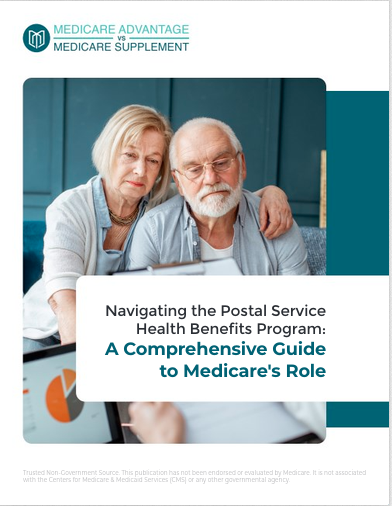Key Takeaways
-
Medicare Part C, also known as Medicare Advantage, combines hospital and medical insurance in one plan, but it functions very differently from Original Medicare.
-
While it may offer convenience and extra benefits, it also comes with provider restrictions, varying out-of-pocket costs, and may limit your flexibility in receiving care.
Medicare Part C in 2025: What It Really Means
Medicare Part C, commonly known as Medicare Advantage, can seem like a streamlined option for your healthcare coverage. After all, it wraps together the benefits of Medicare Part A (hospital insurance) and Part B (medical insurance), and often includes drug coverage. But as of 2025, this alternative to Original Medicare still requires careful consideration. What appears to be a shortcut may have you trading off flexibility, predictable costs, and control over your care.
What You’re Actually Getting with Medicare Part C
When you enroll in a Medicare Advantage plan, you’re opting to receive your Medicare benefits through a private insurance company that contracts with Medicare. Here’s what that includes:
-
All services covered under Part A and Part B
-
Often includes Part D (prescription drug coverage)
-
May offer additional benefits like dental, vision, or hearing services
These added features can sound appealing, but they don’t come without conditions. Most of these plans operate as Health Maintenance Organizations (HMOs) or Preferred Provider Organizations (PPOs), meaning your access to care may be limited to a specific provider network.
Coverage Networks Can Be Tight
One of the biggest differences between Original Medicare and Medicare Advantage is provider flexibility. With Part C plans:
-
You may need referrals to see specialists.
-
You may be required to use doctors and hospitals within the plan’s network.
-
You could be responsible for the full cost of care received outside the network unless it’s an emergency.
If you travel often or live in multiple locations during the year, this can significantly affect how and where you receive care.
Costs Aren’t Always Predictable
Unlike Original Medicare, which has standardized cost structures, Medicare Advantage plans can vary widely. In 2025, general cost features include:
-
Monthly premiums in addition to your Part B premium (though amounts vary)
-
Copayments or coinsurance for most services
-
Annual out-of-pocket maximums, which provide a safety net but can still be substantial
Because each plan sets its own cost-sharing rules, estimating your yearly healthcare expenses can be difficult unless you know exactly how much care you’ll need.
Prior Authorization and Utilization Rules
Another critical consideration in 2025 is the use of prior authorization. Medicare Advantage plans often require it for services like:
-
Diagnostic imaging (e.g., MRIs, CT scans)
-
Skilled nursing facility care
-
Home health care
This means you must get approval from the plan before receiving certain services. While this is intended to manage costs and ensure medical necessity, it can delay care or result in denials for treatments you and your doctor believe are needed.
Drug Coverage Can Differ Too
While many Medicare Advantage plans include prescription drug coverage, their formularies (lists of covered medications) are not uniform. This can affect:
-
Which drugs are covered
-
How much you pay at the pharmacy
-
Whether your current prescriptions are included
If you take multiple medications, you’ll want to carefully review any plan’s drug list and tiers before enrolling.
You Still Have to Pay the Part B Premium
Regardless of whether you choose Original Medicare or a Medicare Advantage plan, you are still responsible for the monthly Medicare Part B premium. In 2025, that amount is $185. Some Advantage plans may offer partial reimbursement for this, but again, this varies and should not be expected.
Switching Plans Is Limited to Specific Times
Enrollment in or changes to a Medicare Advantage plan can only be made during certain periods each year:
-
Initial Enrollment Period (IEP): A 7-month window around your 65th birthday.
-
Annual Enrollment Period (AEP): October 15 to December 7 every year.
-
Medicare Advantage Open Enrollment Period: January 1 to March 31, for those already enrolled in a Medicare Advantage plan to switch or drop coverage.
Outside of these, you must qualify for a Special Enrollment Period due to specific life events (such as moving or losing other coverage).
Comparing Plan Benefits Isn’t Always Straightforward
Plan benefits, costs, and provider networks vary significantly—not just across states, but even within the same county. Two plans may both call themselves Medicare Advantage, yet offer very different experiences. To get the most accurate understanding, you’ll need to:
-
Use the Medicare Plan Finder or other tools
-
Read the plan’s Summary of Benefits
-
Compare coverage areas and provider access
-
Review drug formularies carefully
Dental, Vision, and Hearing: Not Always Comprehensive
Extra benefits like dental, vision, and hearing coverage are often highlighted in Medicare Advantage marketing. But keep in mind:
-
Dental coverage may be limited to cleanings and exams
-
Vision benefits may not include glasses or corrective lenses
-
Hearing coverage might be limited to exams, not hearing aids
You should ask for specifics—how often you’re eligible for these services, what’s covered, and any associated costs.
Your Healthcare Flexibility Shrinks
Under Original Medicare, you can see any provider who accepts Medicare. Under a Medicare Advantage plan, your options may be:
-
Geographically limited
-
Subject to plan approval
-
Inaccessible without referrals
This can be especially important if you have multiple specialists or anticipate moving or traveling in the near future.
What Happens If You Want to Switch Back?
Switching from Medicare Advantage back to Original Medicare is possible, but not always simple. If you drop your Medicare Advantage plan:
-
You may not be able to buy a Medigap (Medicare Supplement) policy if you’re outside your initial enrollment window.
-
You might be subject to medical underwriting, meaning you can be denied coverage or charged more due to health conditions.
That makes your initial decision especially important—it can be difficult and costly to reverse.
Emergency and Urgent Care Is Always Covered
One reassurance is that Medicare Advantage plans are required to cover emergency and urgent care nationwide. Whether you’re inside or outside your plan’s service area, you can receive emergency care without worrying about network rules.
However, follow-up care after an emergency may still be subject to network limitations and prior authorization rules.
Local Factors Play a Big Role
Since Medicare Advantage plans are localized, the number of options available to you in 2025 depends heavily on where you live. Urban areas tend to have more choices, while rural regions may offer fewer plans with more limited networks.
This means two people in different counties could have vastly different experiences with Medicare Advantage.
Evaluating Whether It’s Worth It
In 2025, Medicare Advantage plans remain popular for their convenience and added perks, but they may not be the right fit for everyone. Ask yourself:
-
Are you willing to trade provider freedom for potential savings?
-
Do you take medications that may not be on every plan’s formulary?
-
Do you want predictable costs, or are you okay with variability?
Answering these questions helps clarify whether Medicare Part C is truly the shortcut it appears to be—or whether the trade-offs are more than you’re willing to accept.
Consider Your Priorities Before Enrolling
Medicare Part C offers a bundled approach to healthcare, but that convenience comes at the cost of flexibility, predictable expenses, and in some cases, timely access to care. Before enrolling, make sure you understand what you’re gaining—and what you’re giving up.
If you have questions or need help deciding, speak with a licensed insurance agent listed on this website to make an informed choice that fits your health and financial needs.










